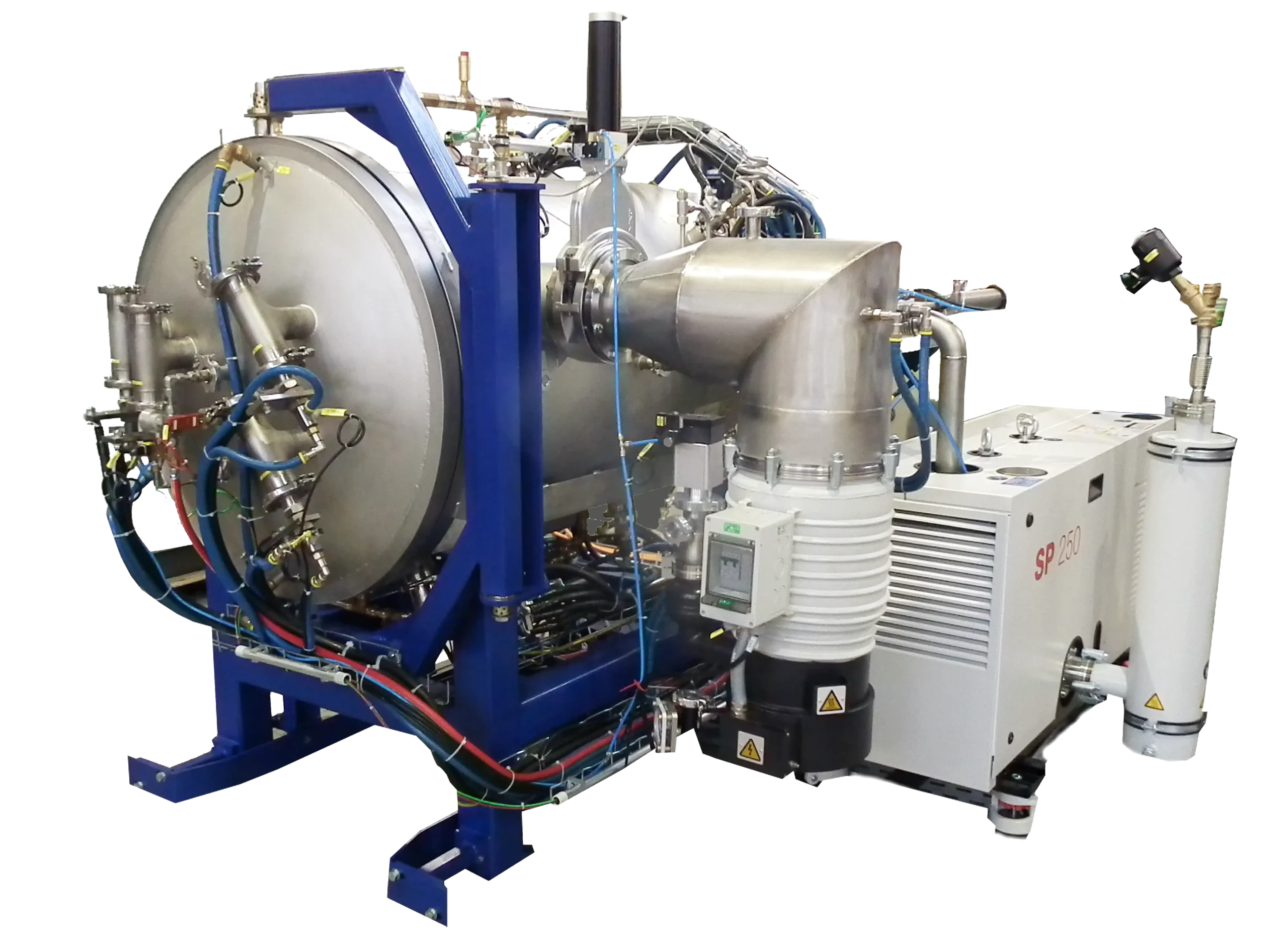The Field Assisted Sintering Technique (FAST), also known as Spark Plasma Sintering (SPS), is revolutionizing titanium powder processing. It serves two distinct purposes in the production chain of titanium components:
- FAST as an Analytical Tool: It enables precise measurement of hydrogen content in titanium powders, providing data to improve the efficiency of an upstream thermal dehydrogenation process.
- FAST as a Sintering Technology: It is then used to process effectively dehydrated and purified titanium powders into high-quality, near-net shape components such as discs, plates, and rings with uniform wall thickness.
By differentiating these two applications, industries can both optimize hydrogen removal in titanium powder preparation and achieve superior component quality in the final sintering process.
Gaining Hydrogen Data with FAST for Upstream Process Improvement
Dehydrating titanium powders, particularly those containing hydrogen in the form of TiH₂, is critical to ensuring high-performance materials. Hydrogen must be efficiently removed in an upstream thermal process to prevent embrittlement in the final component.
FAST plays a crucial role in collecting precise data on hydrogen mass loss, allowing manufacturers to refine the upstream dehydrogenation process before sintering.
1. Indirect Measurement of Hydrogen Content
Since hydrogen mass cannot be directly measured inside a FAST (SPS) machine, the process relies on indirect methods:
- Mass Measurement: The weight of the initial powder is compared to the final weight of the sintered component. “This weight difference represents the mass of hydrogen released during sintering” (Kieback et al., 2007, p. 58).
- Volume Changes: The FAST machine measures the stroke of its ram, representing the height of the sintered disc. Combined with the fixed diameter provided by the graphite tooling, volume changes can be calculated, correlating with hydrogen release.
2. Monitoring Hydrogen Evolution Through Partial Pressure Changes
- Vacuum and Partial Pressure: The applied vacuum affects H₂ partial pressure changes in the chamber. Monitoring these changes provides a correlation between volume reduction and hydrogen evolution (Adam et al., 2011, p. 45).
3. Time-Resolved Analysis of Hydrogen Release
FAST systems track temperature, pressure changes, and stroke displacement over time. This enables:
- Detection of the exact temperature at which hydrogen exits the material.
- Monitoring of the hydrogen release rate using the first derivative of stroke changes (Kretzschmar & Kraft, 2022, p. 82).
With this data, thermal dehydrogenation facilities upstream of FAST processing can be optimized, ensuring more efficient hydrogen removal before sintering.
FAST for Sintering High-Quality Components from Dehydrated Ti Powders
Once the upstream thermal dehydrogenation process has been optimized, FAST is used for a separate application: processing effectively dehydrated titanium powders into high-quality components.
FAST enables the production of near-net shape components while maintaining superior material integrity.
Ensuring High-Quality Outputs
- Fine Grain Microstructure:
The rapid heating and cooling cycles promote uniform, fine grain structures, improving mechanical properties. - Consistent Geometry:
Near-net shape capabilities minimize post-processing and material waste, increasing production efficiency. - High Purity:
The use of high-purity and, in particular, effectively dehydrated titanium powder, which has undergone a dedicated thermal dehydrogenation process upstream prior to FAST, is critical for meeting stringent quality standards in aerospace, medical, and industrial applications. This ensures that the dehydrated powder used in FAST processing is free of excess hydrogen and contaminants, leading to superior component performance and reliability.
Applications in High-Performance Sectors
FAST plays a key role in producing high-performance components:
- Aerospace:
Lightweight titanium components with consistent microstructures and superior strength. - Medical:
High-purity titanium implants and surgical tools requiring excellent biocompatibility. - Industrial:
Cost-efficient production of titanium components with minimal waste.
By optimizing both the upstream dehydration process and the FAST sintering process, manufacturers can meet the strictest quality standards across these industries.
Advancing Powder Dehydration and Facility Design
The data collected during FAST-based hydrogen monitoring allows for strategic improvements in powder processing facilities:
- Reliable Process Control:
Time-resolved monitoring of hydrogen release ensures consistency and repeatability in production. - Tailored Facility Designs:
Understanding hydrogen evolution dynamics enables the design of efficient dehydrogenation facilities upstream of FAST.
Conclusion
FAST plays two crucial roles in the titanium powder processing chain:
- Data Collection for Upstream Process Optimization:
- FAST is used to measure hydrogen content and release behavior, improving the upstream dehydrogenation process.
- Sintering of High-Quality Components:
- FAST is used to process already dehydrated powders, producing high-purity, near-net shape components with excellent mechanical properties.
By leveraging these dual applications of FAST, industries can enhance powder dehydration efficiency, optimize sintering processes, and achieve higher-quality titanium components for demanding applications in aerospace, medical, and industrial sectors.
As the technology advances, FAST will continue to set new standards in efficiency, precision, and material performance.
References
Adam, V., Clauss, U., & Krüssel, T. (2011). Electron beam welding: The fundamentals of a fascinating technology. Pro-beam AG & Co. KGaA.
Kieback, B., Wieters, K.-P., & Schatt, W. (2007). Pulvermetallurgie: Technologien und Werkstoffe. Springer-Verlag.
Kretzschmar, H.-J., & Kraft, I. (2022). Kleine Formelsammlung Technische Thermodynamik. Carl Hanser Fachbuchverlag.
Totten, G. E. (2006). Steel heat treatment: Metallurgy and technologies. Taylor & Francis Group.









